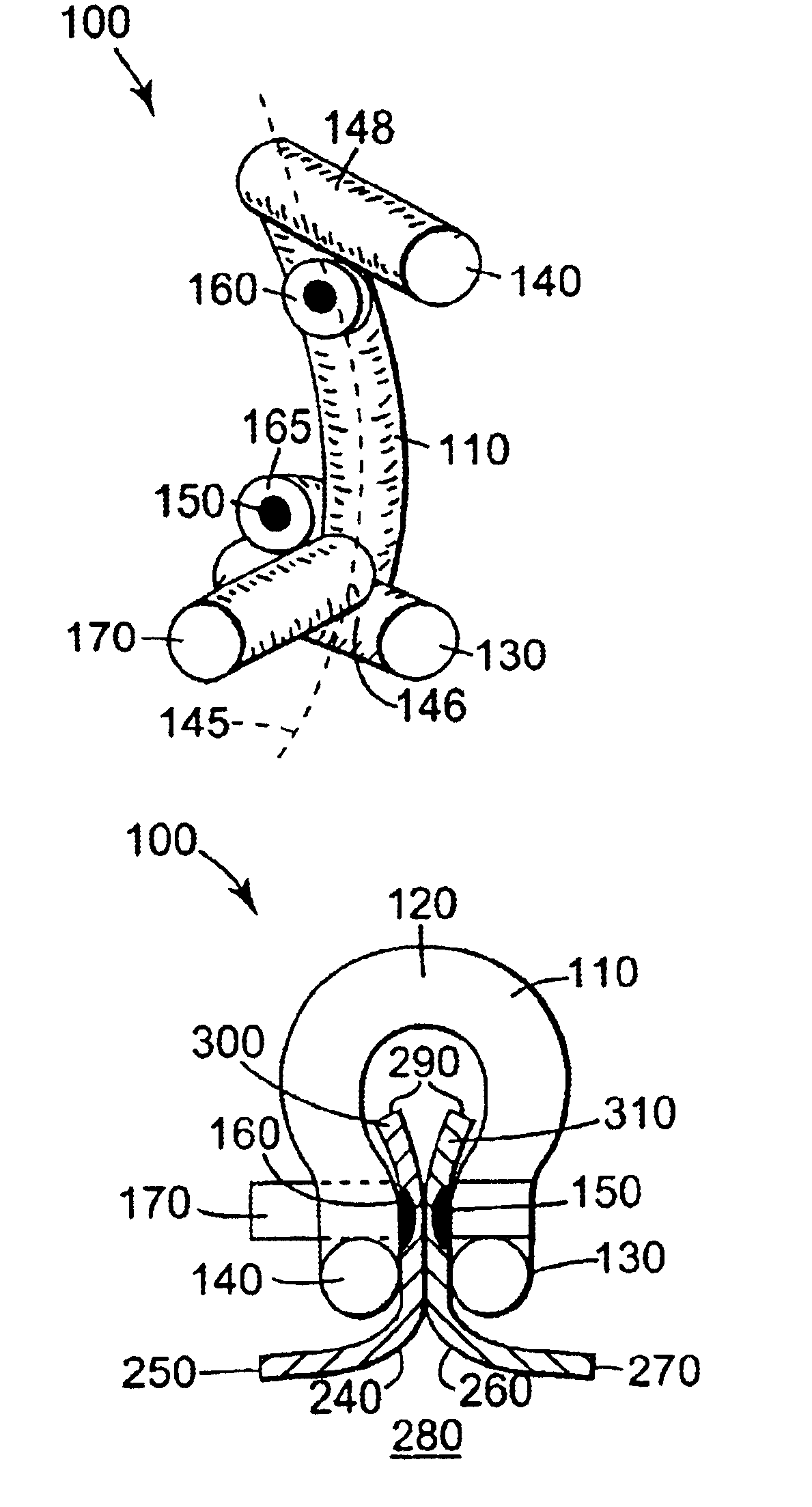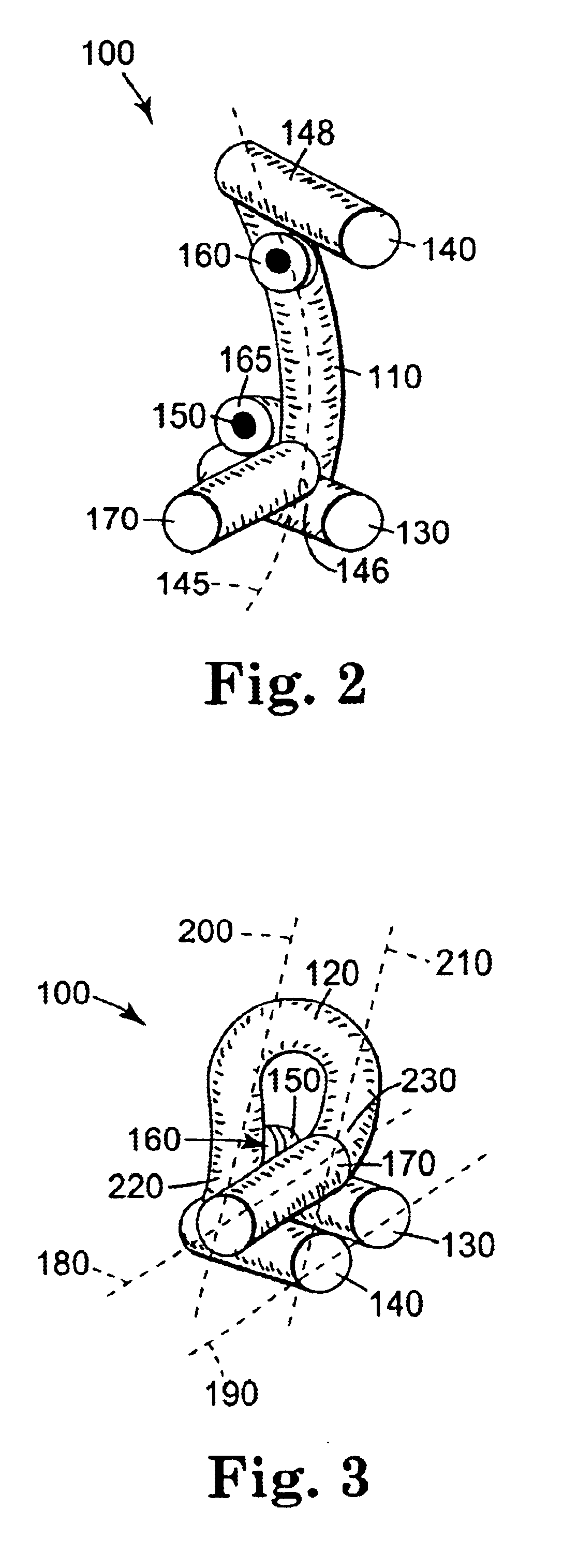Device for creating an anastomosis, including penetration structure and eversion structure
a technology of anastomosis and device, applied in the field of devices, can solve problems such as stenosis (narrowing) or occlusion, and achieve the effects of reducing the patency rate of vascular anastomosis, preventing occlusion, and preventing occlusion
- Summary
- Abstract
- Description
- Claims
- Application Information
AI Technical Summary
Benefits of technology
Problems solved by technology
Method used
Image
Examples
Embodiment Construction
[0030]A first embodiment of surgical staple 100 for creating a completely everted anastomosis is shown in FIGS. 2-9. Staple body 110 of surgical staple 100 is constructed to bend, e.g. at 120 in FIG. 3. At opposite ends of staple body 110, staple 100 includes everting platforms or elements 130, 140 that protrude from staple body 110. Everting platform 130 is centered with respect to longitudinal axis 145 of staple body 110. As illustrated, a central portion 146 of everting platform 130 is connected to the very end of staple body 110. Everting platform 140, on the other hand, is connected to staple body 110 at its end 148, not at a central portion thereof. Thus, as shown in e.g. FIGS. 8-9, everting platforms 130, 140 are offset with respect to each other, in a transverse direction with respect to axis 145.
[0031]Surgical staple 100 also includes first spacing element 150, disposed adjacent staple body 110 at the very end thereof. Specifically, spacing element 150 is adjacent to longit...
PUM
 Login to View More
Login to View More Abstract
Description
Claims
Application Information
 Login to View More
Login to View More - R&D
- Intellectual Property
- Life Sciences
- Materials
- Tech Scout
- Unparalleled Data Quality
- Higher Quality Content
- 60% Fewer Hallucinations
Browse by: Latest US Patents, China's latest patents, Technical Efficacy Thesaurus, Application Domain, Technology Topic, Popular Technical Reports.
© 2025 PatSnap. All rights reserved.Legal|Privacy policy|Modern Slavery Act Transparency Statement|Sitemap|About US| Contact US: help@patsnap.com



